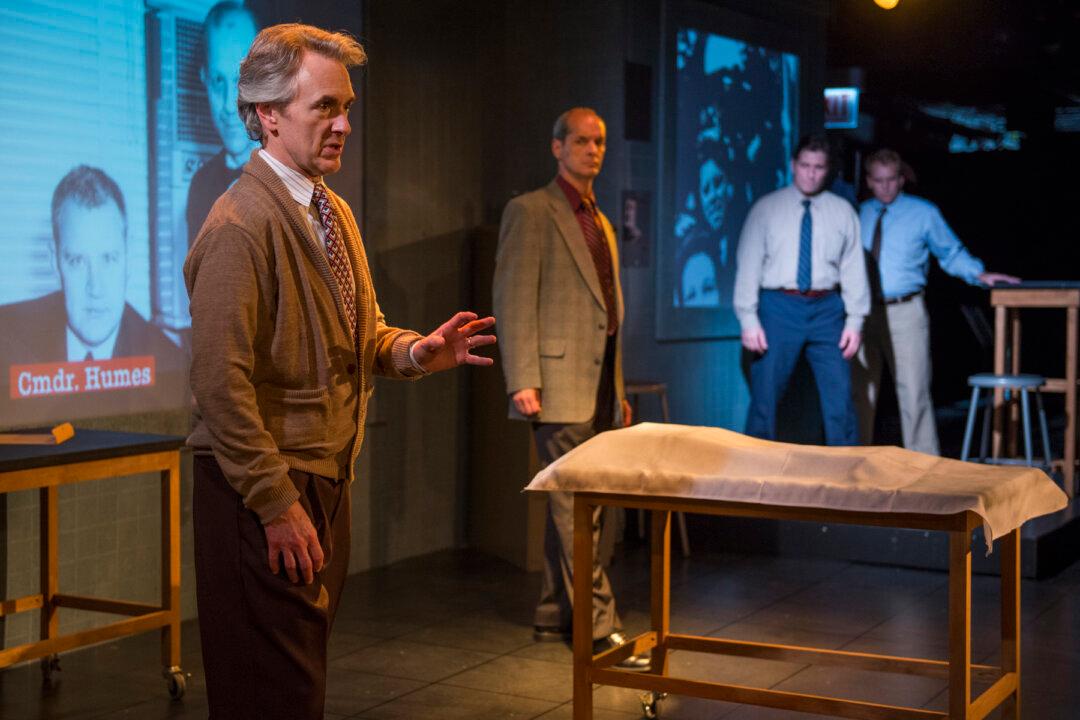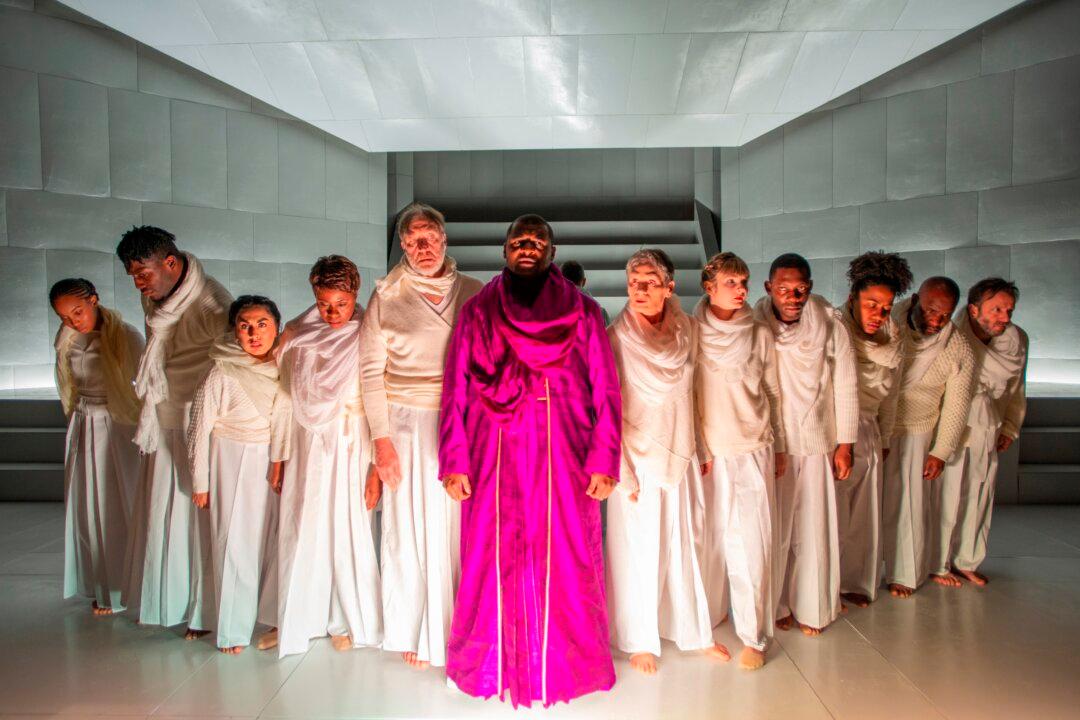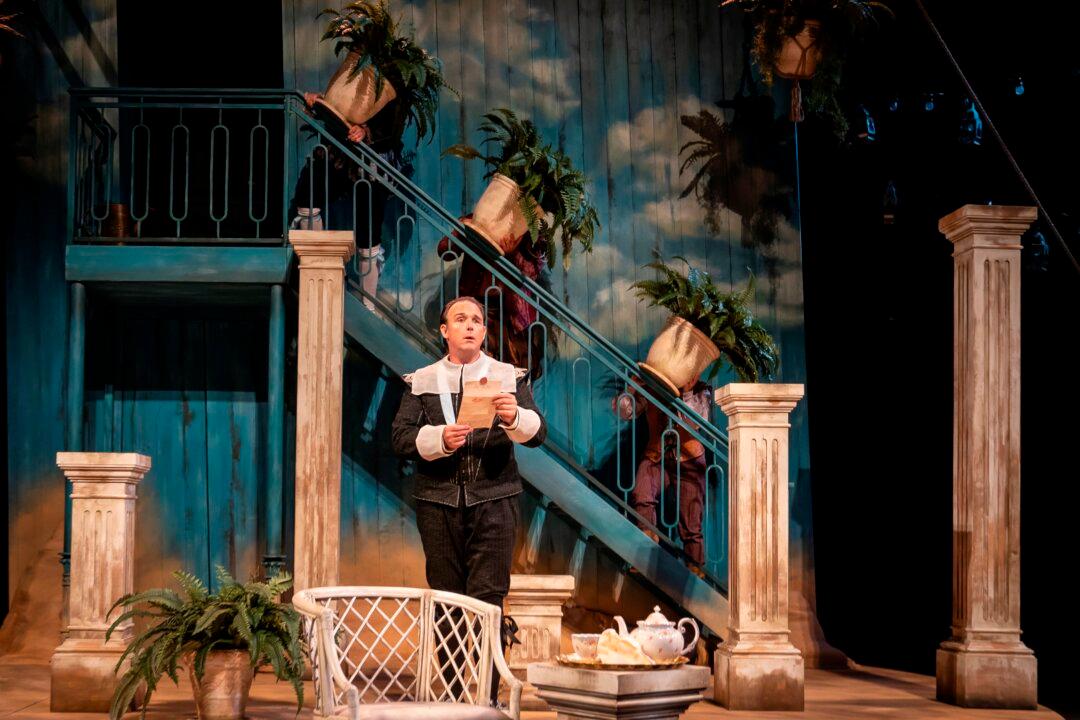CHICAGO—The problem with not looking at the cold hard facts when a crime is committed is that you’re allowing the criminals to come back and bite you in the butt—at least that’s the case when the mob is involved. This point comes across in the investigative theater piece, “Assassination Theater,” which presents another theory as to who assassinated President Kennedy, as well as how and why.
Yes—another conspiracy theory. Our current tolerance for these theories is just about at a level where listeners inwardly groan and out of politeness refrain from rolling their eyes. But Hillel Levin’s investigative theater—based on his compilation of research and presented as fact—presents a compelling story.

(L–R) Michael Joseph Mitchell plays investigative reporter Hillel Levin explaining his theory of the assassination of President Kennedy. Mark Ulrich plays Zechariah Shelton, a retired FBI agent who helps lead the audience through the information. Martin Yurek and Ryan Kitley play all the other characters in "Assassination Theater." Michael Brosilow





